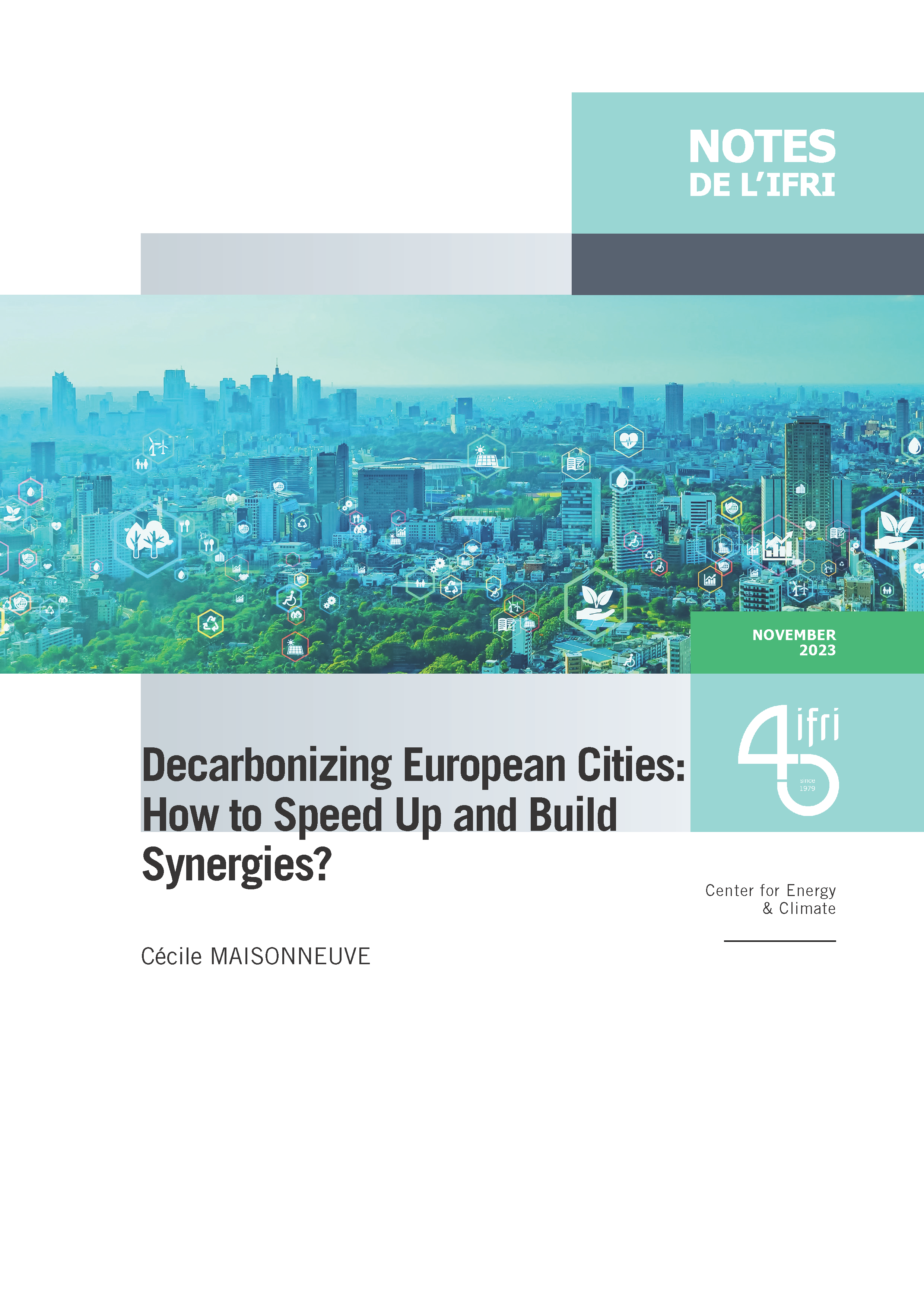Decarbonizing European Cities: How to Speed Up and Build Synergies?

Cities are on the front line for enabling governments to meet their commitments under the Paris Agreement. Although cities occupy only 2% of the earth’s surface, they are home to between 50 and 60% of the world’s population (70% by 2050 according to the United Nations), account for two-thirds of the world’s energy consumption and emit 80% of CO2. As an example, the CO2 emissions of the city of Berlin are equal to those of Croatia, Jordan or the Dominican Republic. New York’s total annual CO2 emissions are roughly equivalent to those of Bangladesh. Yet their central role not only for adaptation, but also mitigation, has been recognized lately.

Cities need to step up their collective ambition, driving systemic change on the ground. They must therefore position themselves on an ambitious trajectory of emissions reduction (or peaking) to achieve carbon neutrality and climate resilience by 2050 at the latest. To this end, it is absolutely crucial for them to have precise methodological tools and adequate skills to put credible strategies in place.
Although cities have been working towards carbon neutrality for a number of years, in particular through the cooperation and partnership networks of mayors they have chosen to join, the path remains largely uncharted. This is amply demonstrated by the diversity of the paths chosen, the approaches adopted, and the tools used. This path is made more difficult by the inherent limit of the nature of cities, namely the territorial limits of their action: this is the whole question of indirect greenhouse gas (GHG) emissions, i.e., those induced by the needs of urban dwellers but not emitted directly in the city. This is a crucial issue when it comes to mobility, which is a major lever for achieving carbon neutrality, but which requires a completely new public policy approach in the absence of convincing results in this area. When looking at the carbon neutrality of a city, the geographical dimension is added to the temporal dimension. C40 identifies two types of approach: the sector-based approach and the consumption-based approach. The sector-based approach takes into account Scope 1 emissions only, i.e., what is directly emitted within the city’s geographical perimeter, while the consumption-based approach takes into account emissions for which the city is “responsible”, i.e., emissions linked to everything consumed within the city’s territory. In fact, the vast majority of the cities only take into account the waste component of indirect emissions, which corresponds to a so-called BASIC level in the accounting standards recommended by the C40.
Against the backdrop of an ongoing resolute effort to decarbonize electricity supplies, European cities should focus not so much on energy production but rather on the most important levers for action: energy efficiency and mobility. Two fundamental lessons can be drawn from the experience of mobility policies implemented in European cities over the last three decades.
First, one-off measures, which are often the focus of communication and territorial marketing, do not work. The right scale of public action is key. In this respect, there is an urgent need for the cycling policies that are being copied one after the other by the major Western cities to be put back into perspective as part of broader mobility policies. While they are useful for public health, their impact on modal shift is more than limited. Territorial marketing cannot take the place of climate policy.
The second lesson to be learned from these experiences concerns the issue of partnerships between stakeholders: urban decarbonization policies require transformative rather than incremental approaches, combining transport, housing, and human activities (leisure, work). As a result, they require long-term partnership approaches in order to secure the political and social acceptance of the citizens concerned. In the case of mobility, the typical example is the relationship between the city center and the suburbs. With the exception of Vienna in Austria, which has been affected to a lesser extent by its century-old public housing policy, the majority of European households live on the outskirts, or even the very outskirts, of towns and cities. In France, CO2 emissions from city-center road mobility now account for just 2% of individual road mobility emissions, compared with 78% for journeys between the different strata of urban areas (the remaining 20% are from rural areas). The work of decarbonizing mobility has already been carried out in urban centers: this is not where attention and investment should be focused, contrary to public communication by elected representatives and the media, which is obsessed with mobility in the urban hypercenter. Investment in public transport, both rail and road, needs to be massively and urgently redirected towards the suburbs. This is a complex process because it involves sophisticated governance between public players since the mobility patterns of city dwellers straddle territorial institutional logics. Yet it is the choice of scope that will determine the success of carbon-neutral city strategies.
Innovation is also crucial to enable a more efficient allocation of the financial resources devoted to decarbonizing cities. In this respect, European cities would benefit from taking global action to accelerate the decarbonization of cities in the southern hemisphere. For example, the very high cost of energy efficiency policies in buildings, particularly energy renovation, – from a financial, social, and even political standpoint – for limited climatic results raises questions about the relevance of Eurocentric urban strategies when it is in the southern hemisphere that the urban revolution of the 21st century is taking place.

Available in:
Regions and themes
ISBN / ISSN
Share
Download the full analysis
This page contains only a summary of our work. If you would like to have access to all the information from our research on the subject, you can download the full version in PDF format.
Decarbonizing European Cities: How to Speed Up and Build Synergies?
Related centers and programs
Discover our other research centers and programsFind out more
Discover all our analysesAI, Data Centers and Energy Demand: Reassessing and Exploring the Trends
The information and communication technologies sector today accounts for 9% of global electricity consumption, data centers for 1-1.3%, and artificial intelligence (AI) for less than 0.2%. The growing energy demands of cloud services first, and now AI workloads (10% of today’s data centers electricity demand), have exacerbated this trend. In the future, hyperscale data centers will gain shares amongst all kinds of data centers and AI will probably account for around 20% of data centers electricity demand by 2030.
Unlocking India’s Energy Transition: Addressing Grid Flexibility Challenges and Solutions
India is rapidly scaling up its renewable energy (RE) capacity, adding 15–20 GW annually, but the ambitious goal of 500 GW of non-fossil capacity by 2030 is at risk unless the pace accelerates.
Europe’s Black Mass Evasion: From Black Box to Strategic Recycling
EV batteries recycling is a building block for boosting the European Union (EU)’s strategic autonomy in the field of critical raw minerals (CRM) value chains. Yet, recent evolutions in the European EV value chain, marked by cancellations or postponements of projects, are raising the alarm on the prospects of the battery recycling industry in Europe.

The New Geopolitics of Energy
Following the dramatic floods in Valencia, and as COP29 opens in Baku, climate change is forcing us to closely reexamine the pace—and the stumbling blocks—of the energy transition.







